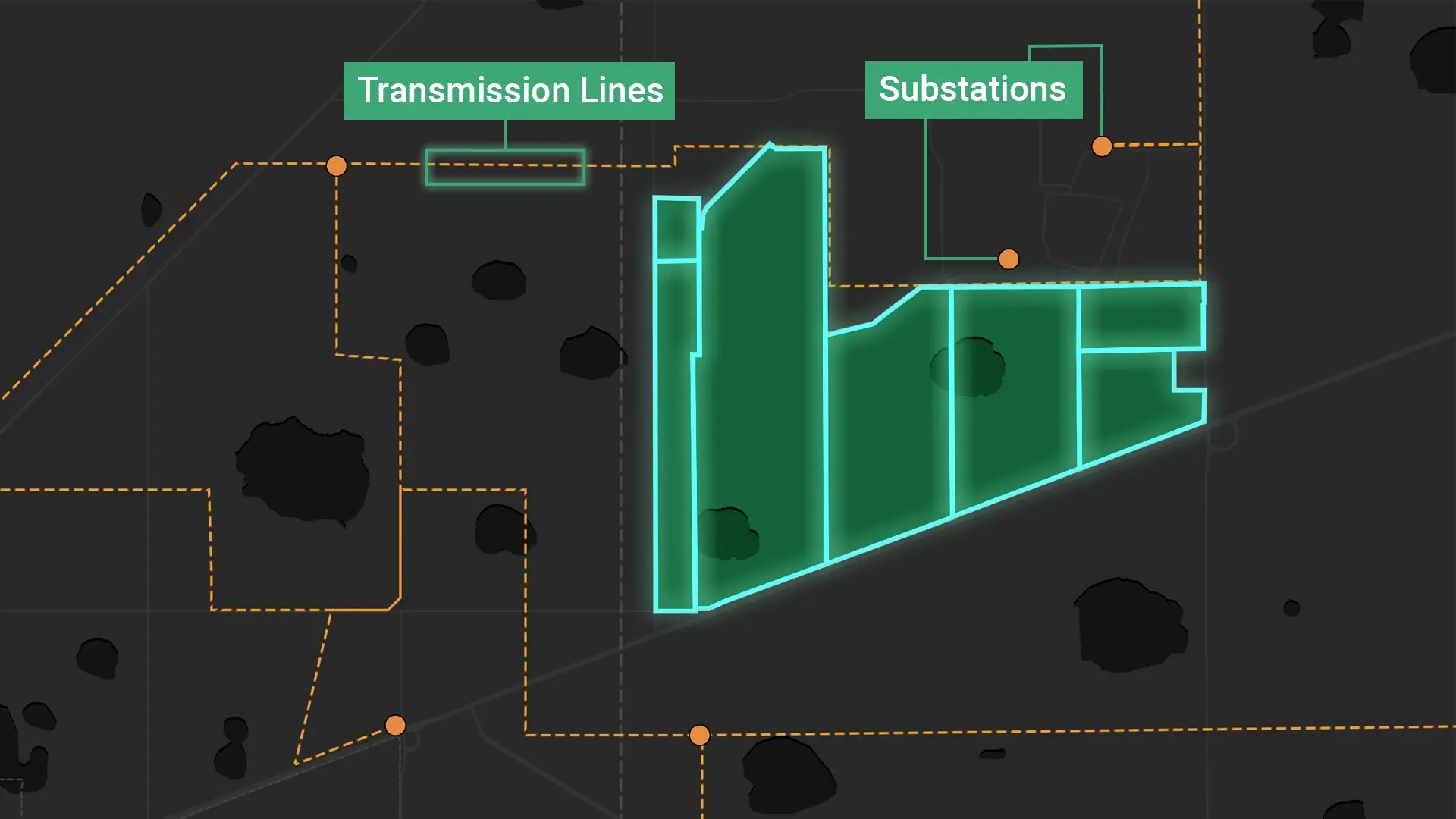Texas Tech University System and Fermi America are developing HyperGrid, a 5,800-acre Advanced Energy and Intelligence Campus near Amarillo, Texas. Designed to support 18 million square feet of data centers, the project will generate 11 gigawatts of on-site power from a mix of nuclear, gas, solar, wind, and battery storage.
HyperGrid offers a new blueprint for infrastructure—one that builds the grid it needs, rather than adapting to what's already there.
Why HyperGrid Stands Out: A Breakthrough in Data Center Siting and Power Strategy
1. Energy-Optimized Location
HyperGrid sits within the Panhandle Hugoton Gas Field, one of the largest natural gas reserves in the U.S., with direct access to multiple major pipelines. Its location offers:
- High solar irradiance for onsite generation.
- Proximity to robust power and fiber infrastructure.
- Direct fuel access, eliminating reliance on congested grid interconnects.
2. Scalable Potential
With 5,800 contiguous acres, HyperGrid allows the co-location of reactors, turbines, substations, and hyperscale data centers. The energy roadmap includes:
- 1 GW online by 2026.
- Full 11 GW buildout by 2032.
This scale means developers can grow without land or energy limitations.
3. University-Backed Innovation
This site plan also includes a dedicated facility with office, classroom, and conference space—designed to support the TTU System’s mission by equipping the next generation with practical training and workforce skills.
Beyond energy and tech, HyperGrid will serve as a hands-on learning hub for students and faculty, offering internships, research opportunities, and job placement programs across all five TTU System institutions.
4. Built-In National Security
HyperGrid is adjacent to the Pantex Plant, the U.S. government’s only nuclear weapons assembly site. This proximity offers built-in physical security and alignment with federal infrastructure priorities. It’s also designated as “critical defense infrastructure” under federal executive order.
5. Power-Defined Infrastructure: Onsite Generation
Instead of relying on the grid, Fermi is building a layered, resilient power stack:
This self-sufficient power stack allows Fermi to deliver compute without compromise.
Final Thoughts
As demand for AI capacity soars and the grid strains to keep up, HyperGrid offers a glimpse into what’s next: energy-secure, fiber-rich campuses that don’t wait for permission, but build the future from the ground up.
Subscribe to Acres Intel: Data Center Edition on LinkedIn for strategic insights on where AI infrastructure is heading, how grid dynamics are reshaping site selection, and what it takes to compete in the race for power-ready land.
